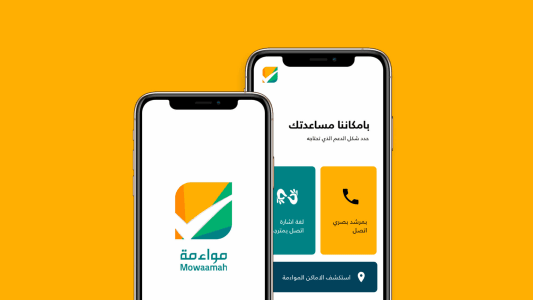Why follow WCAG standards?
What are the WCAG standards and why should digital product creators follow them? In this article, we take a look at the practical side of accessible digital design, including the available standards, and how the benefits of applying those standards go far beyond the users who inspired them.

Table of contents
What are WCAG standards?
WCAG stands for Web Content Accessibility Guidelines, produced by the Web Accessibility Initiative. To quote their own website, the purpose of the WCAG standards are to provide
a single shared standard for web content accessibility that meets the needs of individuals, organizations, and governments internationally.
The core focus of the standards is on ensuring that people with disabilities can access and use web content without being disadvantaged. The WCAG standards aim to support users with a wide range of disabilities, including visual, auditory, physical, speech, cognitive, language, learning, and neurological. However, the standards take a broader view of accessibility than issues related to disability. A product is accessible when, “anyone is able to use it regardless of their physical, intellectual, or technological limitations.” This includes limitations related to use and situation as well as disability.
The standards’ scope includes the text, images, and sounds that form part of the user interface and experience, and the behind-the-scenes coding and structural design of websites, platforms, and digital apps.
The WCAG standards are intended for use by developers of web content, web authoring tools, accessibility evaluation tools, and anyone else who needs standards for web accessibility. These are technical standards for practical design and development use; the goal here is to have a beneficial practical impact on web content.
What is the difference between WCAG 2.0 and 2.1?
Version 1.0 of the WCAG standards was established in 1999, and updated to version 2.0 in 2008. The most recent update is version 2.1, published in 2018, incorporating a variety of new recommendations in relation to:
- Orientation
- Identifying input purpose
- Reflow – (zoomed content is presented in a single column; i.e. it’s unnecessary to scroll in two dimensions to read it)
- Non-text contrast
- Text spacing
- Content triggered by hover or keyboard focus
- Character key shortcuts
- Timeouts – (providing warnings that user inactivity could cause data loss).
- Animation triggered by interaction can be disabled, unless essential to functionality.
- Pointer gestures and cancellation
- Text labels
- Motion actuation can be disabled, unless essential to functionality.
- Minimum target size for pointer inputs
- Variety of input mechanisms
- Status messages
(Work is currently ongoing on version 3.0 of the WCAG standards, expected to launch within the next few years.)
Who sets the WCAG standards?
The standards, and accompanying technical documents, explanations, and guidance for use, are developed by a working group from the World Wide Web Consortium (W3C) Web Accessibility Initiative (WAI).
WCAG Standards – obligatory or optional?
Let’s be clear: the WCAG standards are best practice, often referred to as the ‘gold standard’ for online and digital product accessibility. That said, are they required by law? No, they’re not. The reasons are practical – the WCAG are global in scope and legal compliance is national (or at best, territorial). While the standards may be the current best way of ensuring accessibility to whoever your users are and wherever they may be, only some governments have linked them to legislation; e.g. the US, Canada, Australia, and European Union.
For private organizations, the standards are technically optional. At Boldare, we apply the relevant WCAG standards to all our clients’ products because – simply put – they are the accessibility gold standard, and we want the widest possible range of users to be able to access the products we make. Both because it’s the right thing to do and there are clear business benefits to doing so.
An overview of the WCAG accessibility standards
In format, the standards follow a layered structure, beginning with four overarching principles:
- Perceivable – users must be able to perceive the information and components that form the product or content.
- Operable – users must be able to operate the interface.
- Understandable – users must be able to understand the information presented.
- Robust – the content can be interpreted by a wide variety of users and agents, including assistive technologies (including the need to remain accessible as technologies evolve).
Next come 13 guidelines which contain the core goals that content authors and digital designers should aim to fulfill to ensure accessibility.
The WCAG guidelines are not subject to testing or measurement. The next layer – the success criteria – adds testability to the standards. Each guideline has a number of measurable success criteria, allowing designers and content owners to assess the level of compliance of a specific digital product or online content.
Finally, to support compliance, the guidelines and success criteria are accompanied by a variety of specific techniques which meet the standards. Techniques fall into two categories:
- sufficient (the success criteria are met)
- advisory (going beyond basic compliance, providing greater accessibility)
WCAG basics – applying the standards
To support our clients in identifying the correct accessibility issues for a product, we have developed a product accessibility workshop to work through the requirements for specific products. Some of the common design areas in which the standards offer practical help include:
- Colors – Contrast between text and background is important, both for users with a visual impairment and for any user with tired eyes. Tools such as Contrast Checker or Check My Colours are useful.
- Fonts – Clarity and size are critical factors, not only for legibility but also for easily distinguishing between titles, headlines, captions, and main text.
- Element size – For example, button size has a big impact on usability for many, especially on mobile devices.
- Subtitles – Practical support for those with a hearing impairment and for situations when users cannot view the content with the sound switched on.
- Alt text – All photos, images, and icons should have an alt text description; this supports users with visual impairments, and can also boost the content’s SEO ranking.
This is just scratching the surface of accessible design strategies and issues. For an example of how we addressed accessibility in a real-life product, check out our Mowaamah case study.
Why is WCAG important? Benefits for your product
How does applying the WCAG standards benefit the final product? Let’s see:
- A more usable product – Focusing on accessibility is also focusing on usability; many of the factors are the same (color, design, clarity, etc.) and working to WCAG standards increases usability.
- Greater market reach – The key word here is ‘inclusion’; by making your product or content more accessible, you are including more potential users in the available market.
- Increased innovation – Incorporating the WCAG standards into your design process presents a number of challenges that will encourage developers to think more deeply about what they are creating, and why.
- A boost to your brand – Do you want to be seen as a company that cares, or as the company that couldn’t care less? Tough choice! Being seen to prioritize user issues (and following through on that!) is good for your reputation.
- Better SEO – As already mentioned, some accessibility practices (e.g. alt texts for images) actually result in better search engine rankings for your website.
- Improved ROI – A more carefully designed, innovative product that results in more users is a recipe for a greater return on your investment.
WCAG standards are central to modern digital design
At Boldare, we use the relevant WCAG standards in our design and development processes. We know that not only do they constitute good advice and guidance (after more than two decades of continuing evolution) the resulting products also have wider appeal and utility. Applying WCAG accessibility standards is good for our reputation, good for our clients’ business goals, and good for the users.
Share this article:









